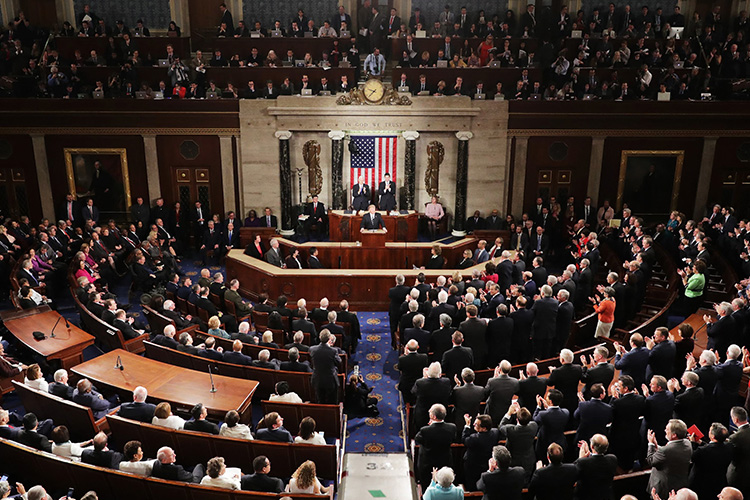
The House of Representatives in Washington, D.C.. photo by Chip Somodevilla
Just days after the threat of what seemed like an inevitable government shutdown was averted, chaos engulfed the House of Representatives once again.
What began with the threat of a government shutdown escalated when Speaker Kevin McCarthy was ousted on October 3rd. McCarthy gained his position with promises to far-right Republicans that included spending cuts, but when a government shutdown seemed imminent, he turned to Democrats to pass a 45-day spending bill to keep the government functional. This angered several Republicans, who felt betrayed by McCarthy and, with the support of Democrats, voted to expel him as speaker.
Each year on September 30th, the federal fiscal year ends, and a new spending bill must be passed to keep the government functional. If funding isn’t approved, the government shuts down. This means that many government operations stop, and government workers don’t get paid until a spending bill is passed. While certain essential functions like social security payments would continue, other things like food stamps or programs for low-income families would stop. Additionally, all non-essential government workers would either get furloughed or temporarily suspended and not receive any pay for however long the shutdown lasts. During the last government shutdown, which began in December of 2018, federal employees did not receive pay for over a month.
This year, a government shutdown seemed all but certain when the House had yet to pass a bill on September 30th. However, just hours before the deadline, former Speaker Kevin McCarthy introduced a short term bill that would fund the government for 45 days and relied on Democrats to pass it. Since the bill was brought up through an expedited process, it needed the support of two-thirds of House members. This may have been an issue, but it passed 335-91, with 126 Republicans and 209 Democrats voting yes, while 90 Republicans and a single Democrat voted no. The bill went on to pass the Senate and was signed by President Biden. This means that Congress has until November 17 to pass another spending bill if the government is to stay open.
However, recent developments in the House have made this process challenging. On October 3rd, Kevin McCarthy was ousted from his position as Speaker in a narrow vote. McCarthy’s decision to ignore far-right demands to drastically cut federal spending and instead rely on Democrats to pass a more bipartisan bill angered a group of Republicans. While it was this group, led by Representative Matt Gaetz, who brought the motion up, only eight of them voted against McCarthy. The rest of the votes came from Democrats, who unanimously voted to remove McCarthy from the position of Speaker on the basis that McCarthy’s catering to far-right representatives had destabled the House.
However, leaving the House without a speaker has its own destabilizing effects. Until a new speaker is elected, the House cannot vote on any bills, including a new spending bill. However, Republicans are having a hard time electing a speaker. Their first candidate, Representative Jim Jordan, ended his bid after losing three rounds of voting, and no new candidate has been voted on yet. It took McCarthy 15 rounds of voting in January to finally be elected speaker, and since the House is now even more divided, it may take many more weeks for a speaker to actually get elected, further increasing the threat of a real government shutdown.